
Count Gustaf Mauritz Armfelt was a Finnish-Swedish-Russian courtier and diplomat. In Finland, he is considered one of the greatest Finnish statesmen. His advice to Russia's Tsar Alexander I was of utmost importance for securing the autonomy of the Grand Duchy of Finland.
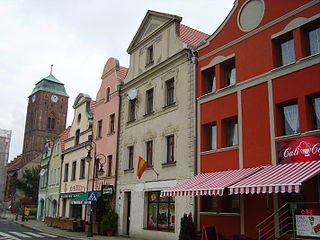
Żagań is a town in western Poland, on the Bóbr river, with 25,731 inhabitants (2019). The town is the capital of Żagań County in the historic region of Silesia. Previously in the Zielona Góra Voivodeship (1975–1998), Żagań has been in the Lubusz Voivodeship since 1999.

Jelgava is a state city in central Latvia about 41 kilometres southwest of Riga. It is the largest town in the region of Zemgale (Semigalia). Jelgava was the capital of the united Duchy of Courland and Semigallia (1578–1795) and the administrative center of the Courland Governorate (1795–1918).
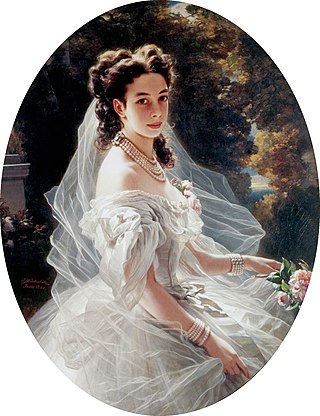
Pauline Clémentine Marie Walburga, Princess of Metternich-Winneburg zu Beilstein was a famous Austrian socialite, mainly active in Vienna and Paris. Known for her great charm and elegance as well as for her social commitment, she was an important promoter of the work of the German composer Richard Wagner and the Czech composer Bedřich Smetana. She was also instrumental to the creation of the haute couture industry.
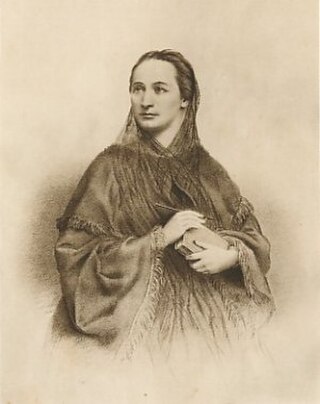
Božena Němcová was a Czech writer of the final phase of the Czech National Revival movement.
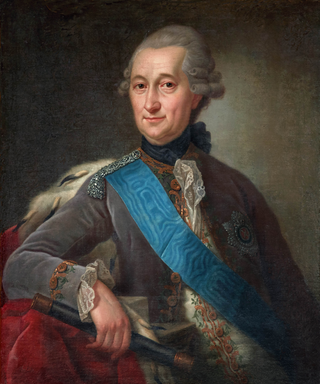
Peter von Biron was the last Duke of Courland and Semigallia, from 1769 to 1795.
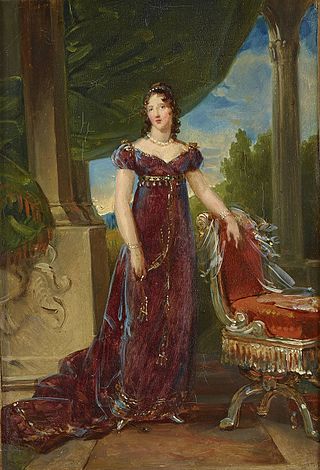
Dorothea von Biron, Princess of Courland, Duchess of Dino, Duchess of Talleyrand and Duchess of Sagan, known as Dorothée de Courlande or Dorothée de Dino, was a Baltic German noblewoman, and the ruling Duchess of Sagan between 1845 and 1862. Her mother was Dorothea von Medem, Duchess of Courland, and although her mother's husband, Duke Peter von Biron, acknowledged her as his own, her true father may have been the Polish statesman Count Aleksander Batowski. For a long time, she accompanied the French statesman Charles Maurice de Talleyrand-Périgord; she was the separated wife of his nephew, Edmond de Talleyrand-Périgord.
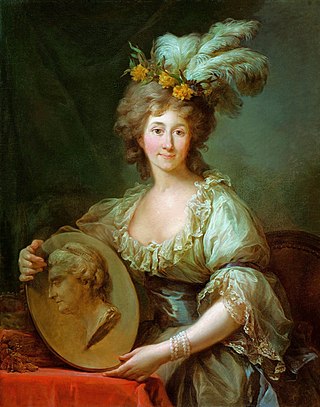
Countess Anna Charlotte Dorothea von Medem was born a Gräfin (Countess) of the noble Baltic German Medem family and later became Duchess of Courland. Popularly known as Dorothea of Courland after her marriage to Peter von Biron, the last Duke of Courland, she hosted an aristocratic salon in Berlin and performed various diplomatic duties on behalf of her estranged husband. She would spend the rest of her life in her estate in Löbichgau, where she would invite and host many important political and cultural figures of the time and make many acquaintances, ranging from Goethe over Napoleon I of France to Talleyrand, the latter of whom she was reportedly very close.

Charles Guillaume Frédéric Boson de Talleyrand-Périgord, prince of Sagan, duke of Sagan and duke of Talleyrand was a famous French dandy, and the grandson of Dorothea von Biron.
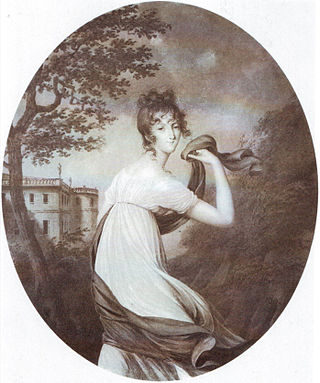
Luise Pauline Maria Biron, Princess of Courland, Duchess of Sagan was the Duchess Regnant of Sagan between 1838 and 1845. She was Princess consort of Hohenzollern-Hechingen by marriage to Friedrich Hermann Otto, Prince of Hohenzollern-Hechingen.
William Gustav of Anhalt-Dessau was a German prince of the House of Ascania and heir to the principality of Anhalt-Dessau.

The Duchy of Żagań or Duchy of Sagan was one of the duchies of Silesia ruled by the Silesian Piasts. Its capital was Żagań in Lower Silesia, the territory stretched to the town of Nowogród Bobrzański in the north and reached the Lusatian Neisse at Przewóz in the west, including two villages beyond the river.

Henri Louis de Rohan, Prince of Guéméné, was a French courtier and the penultimate Grand Chamberlain of France.

Ratibořice Château is a chateau in Ratibořice village in the Hradec Králové Region of the Czech Republic. It stands on an elevated plain below which valley in the bend of the Úpa river widens. Together with Babiččino údolí, situated between Česká Skalice and Havlovice, it offers the Baroque architecture and Bohemian landscape, ranking among the best-known and most-frequented places in East Bohemia. They have become well known to the general public thanks to Babička , the most famous work of the writer Božena Němcová.

Princess Sophie Amalie of Nassau-Siegen, German: Sophia Amalia Prinzessin von Nassau-Siegen, official titles: Prinzessin von Nassau, Gräfin zu Katzenelnbogen, Vianden, Diez, Limburg und Bronkhorst, Frau zu Beilstein, Stirum, Wisch, Borculo, Lichtenvoorde und Wildenborch, Erbbannerfrau des Herzogtums Geldern und der Grafschaft Zutphen, was a countess from the House of Nassau-Siegen, a cadet branch of the Ottonian Line of the House of Nassau. In 1664, she was elevated to the rank and title of princess. By marriage she became Duchess Consort of Courland.

Yevdokiya Borisovna Yusupova, was a Duchess consort of Courland. She married the Duke of Courland, Peter von Biron, on March 6, 1774 in Mitau. She had no issue.

Anna of Sagan was the last surviving member of the Głogów-Żagań branch of the Silesian Piasts family, and by marriage duchess of Münsterberg and Oels.
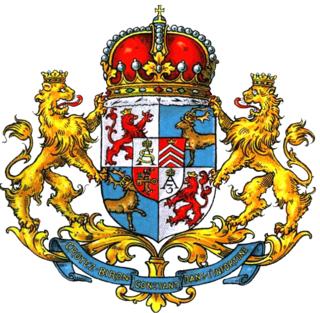
The House of Biron is the name of the Baltic German aristocratic family which was the ruling family of the Duchy of Courland and Semigallia. The family also enjoyed privileges and influence during the times of the Polish–Lithuanian Commonwealth and in the Russian Empire.

Albertine, Princess of Anhalt-Bernburg was the second wife and consort of Victor Frederick, Prince of Anhalt-Bernburg.

Johanna Katharina von Biron, Princess of Courland and Duchess of Acerenza was a German princess from the ruling family of Courland and Semigallia and a Duchess of Acerenza and was the third daughter of Peter von Biron and Dorothea von Medem and the wife of Prince Francis Pignatelli Belmonte, Duke of Acerenza, she was mainly known for a scandalous relationship with Arnoldi, a musician from Italy.




















